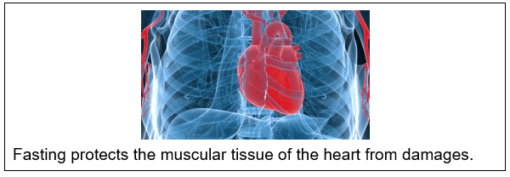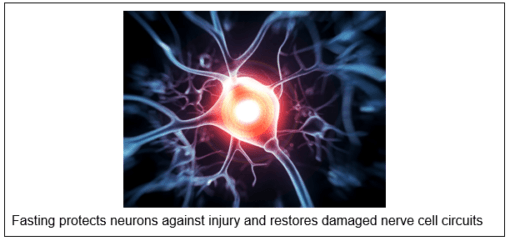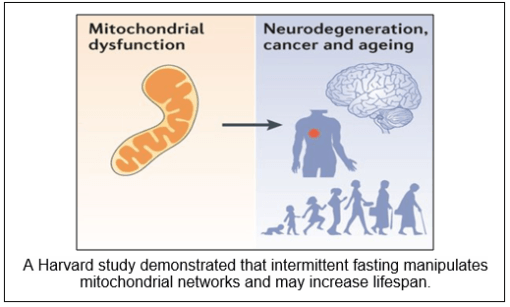
Fasting Ramadan Health Benefits
By Dr Muhammad Solaiman
Fasting Ramadan is a great opportunity to get immense rewards and nourish our souls to attain higher levels of spirituality. In addition to these benefits, fasting has tremendous health benefits. Among many others, these health benefits extend to everything from better weight management, improved cardiovascular health, healthier blood composition, and better cell recycling.
Although, fasting is generally safe for healthy individuals, it may not be suitable for some patients with chronic health conditions, like diabetes and chronic kidney disease. However, generally, Allah has exempted patients from fasting and therefore, they should consult healthcare professionals before initiating fasting.
“O you who believe! Fasting is prescribed for you, as it was prescribed for those before you… But whoever among you is sick, or on a journey, then a number of other days” (Qur’an 2:183-184).
Some of the benefits of fasting
1.Weight loss
Fasting in Ramadan could achieve and maintain significant weight loss. It induces weight loss through various mechanisms, including reduced energy intake, reduction of total body fluids, changes in the serum levels of leptin, insulin, and cortisol.
In addition, fasting leads to Ketosis which helps in burning fat reserves. Ketosis is reached either by fasting or eating a diet centred on healthy fats. Fasting helps to reach ketosis boost fat metabolism (1).
2. Obesity prevention
Obesity is characterized by large amounts of fat tissues. Fatty tissues act as a kind of endocrine organ, which produces several hormones such as leptin. Leptin affects hunger level and post-meal satisfaction. Excessive body weight induces Leptin-resistance and results into obesity (2). With fasting, leptin levels drop and therefore, we leptin-resistance decreases and we become more responsive to leptin signals.
3.Reduction of insulin resistance
Overweight and obese individuals secret high levels of certain mediators like leptin from their adipose tissues. This often leads to insulin resistance. According to a randomized clinical trial conducted on young, overweight women, levels of fasting insulin and insulin resistance decreased as a result of fasting (3).
4.Reduction of blood glucose
In just the first few days of fasting, blood sugar drops over 30%. Fasting is usually associated with improved insulin sensitivity. In research performed on eight men and eight women, fasting was reported to cause no significant changes in the blood glucose level (4).
5.Diabetes prevention
In insulin-resistance, the cells do not respond to insulin that fuel is coming and therefore, they don’t open up to receive glucose. Insulin resistance is the major cause of diabetes type II and diabetes developed by some women during pregnancy (gestational diabetes).
Fasting improves insulin sensitivity through the reduction of serum leptin. Therefore, it decreases glucose and the risk of acquiring diabetes (8).
6.Reduction of blood pressure
Fasting is an effective non-pharmacological measure to diminish hypertension. Ramadan fasting has been reported to reduce the systolic and diastolic blood pressures significantly. Additionally, the dehydration associated with fasting could lower blood pressure, ventricular ejection, and arterial stiffness (5).
7.Improvement of lipid profile
Fasting significantly decreases triglyceride levels and increase HDL, which could even be maintained for some time after Ramadan. Feeding behaviours, calorie restriction, and timing of food intake contribute to the improvement of the lipid profile associated with fasting (6).
8.Improvement of cardiovascular health
Fasting is associated with improved cardiovascular risk factors, including 1) low-density lipoprotein cholesterol, 2) triglycerides, 3) systolic blood pressure, Fasting leads to elevated high-density lipoprotein cholesterol (HDL). HDL is sometimes called the “good” cholesterol because it carries cholesterol from other parts of your body back to your liver. Your liver then removes the cholesterol from your body. Therefore, fasting protects the muscular tissue of the heart from damages due to the restriction of blood supply (7).

9.Delay of vascular ageing
Scientists at Georgia State University in Atlanta have demonstrated that fasting produces a molecule that delays vascular ageing (15).
10.Cancer prevention
Fasting reduces the levels of insulin and glucose which protect cells against DNA damage and augment apoptosis of damaged cells. Fasting and chemotherapy synergistically promote the DNA breaks in cancer cells and reduces chemotherapy-induced complications (9).
11.Neuroprotection
Neuroprotection refers to the relative preservation of neuronal structure and/or function. Fasting may protect the neurons against tissue injury and stimulate the production of new neurons to restore damaged nerve cell circuits (10).

12.Improvement of cognitive function
Fasting induces neuroprotection which leads to the improvement of cognitive function. Research has suggested that fasting also stimulates faster learning and better memory (11).
13.Improvement of Alzheimer’s and depression in elders
Fasting has been recommended to improve Alzheimer’s and to reduce the incidences of depression in elderly males (12)
14.Reduction of inflammation
There are certain substances (inflammatory cytokines) which promote inflammation in our body. They increase the risk of inflammatory diseases, such as atherosclerosis, and cardiovascular diseases. Fasting decreases the expression of these substances and decreases inflammation in our bodies (13).
15.Promotion of health and life span
Ageing is associated with a gradual loss of the function of various organs and the development of chronic diseases such as cardiovascular diseases, diabetes, cancer, bone fragility (osteoporosis) (14). Intermittent fasting can keep your body younger and extend our lifespan by the improvement of our overall health and the reduction of the incidence of chronic diseases (15).
One of the mechanisms through which fasting fights cellular ageing and helps to improve our lifespan is the protection of mitochondria (16). Mitochondria are cellular structures that convert nutrients into energy in our cells.

16.Promotion of healthier skin
Our diet is important to our skin’s appearance. Fasting can improve the integrity of the skin. High blood sugar changes the structure of the collagen of the skin by weakening its strength and resilience. Since fasting substantially lowers blood sugar, it improves the condition of our skin (17).
How to get and maintain the health benefits of fasting
Fasting individuals are recommended to adhere to a balanced diet during Ramadan containing fruits and vegetables, whole grains, meat, fish, and dairies. In addition, they need to drink fluids abundantly.
We are advised to avoid deep-fried foods, too many sweets, and fatty foods. The health benefits of fasting could be sustained by leading a healthy lifestyle after Ramadan and by practicing optional fasting. Prophet Muhammad, peace be upon him used fast twice a week on Mondays and Thursdays.
References
- Krilowicz BL. Ketone body metabolism in a ground squirrel during hibernation and fasting. American Journal of Physiology-Regulatory, Integrative and Comparative Physiology. 1985; 249(4):R462-70.
- Dong M, Ren J. What fans the fire: insights into mechanisms of leptin in metabolic syndromeassociated heart diseases. Curr Pharm Design. 2014; 20(4):652-8.
- Harvie MN, Pegington M, Mattson MP, Frystyk J, Dillon B, Evans G, et al. The effects of intermittent or continuous energy restriction on weight loss and metabolic disease risk markers: a randomized trial in young overweight women. Int J Obesity. 2011; 35(5):714.
- Heilbronn LK, Smith SR, Martin CK, Anton SD, Ravussin E. Alternate-day fasting in nonobese subjects: effects on body weight, body composition, and energy metabolism. Am J Clin Nutr. 2005; 81(1):69-73.
- Ünalacak M, Kara IH, Baltaci D, Erdem Ö, Bucaktepe PG. Effects of Ramadan fasting on biochemical and hematological parameters and cytokines in healthy and obese individuals. Metab Syndr Relat Disord. 2011; 9(2):157-61.
- Al-Shafei AI. Ramadan fasting ameliorates arterial pulse pressure and lipid profile, and alleviates oxidative stress in hypertensive patients. Blood Press. 2014; 23(3):160-7.
- Ahmet, I, Wan, R, Mattson, MP, Lakatta, EG, & Talan, M. Cardioprotection by intermittent fasting in rats. Circulation, 2005; 112(20), 3115-21.
- Rogozina OP, Bonorden MJ, Seppanen CN, Grande JP, Cleary MP. Effect of chronic and intermittent calorie restriction on serum adiponectin and leptin and mammary tumorigenesis. Cancer Prev Res. 2011; 4(4):568-81.
- Safdie FM, Dorff T, Quinn D, Fontana L, Wei M, Lee C, et al. Fasting and cancer treatment in humans: a case series report. Aging (Albany NY). 2009; 1(12):988-1007.
- Lee J, Seroogy KB, Mattson MP. Dietary restriction enhances neurotrophin expression and neurogenesis in the hippocampus of adult mice. J Neurochem. 2002; 80(3):539-47.
- Lee J, Seroogy KB, Mattson MP. Dietary restriction enhances neurotrophin expression and neurogenesis in the hippocampus of adult mice. J Neurochem. 2002; 80(3):539-47.
- Halagappa VK, Guo Z, Pearson M, Matsuoka Y, Cutler RG, LaFerla FM, Mattson MP. Intermittent fasting and caloric restriction ameliorate age-related behavioral deficits in the triple-transgenic mouse model of Alzheimer’s disease. Neurobiology of disease. 2007; 26(1):212-20.
- Fontana L, Klein S. Aging, adiposity, and calorie restriction. JAMA. 2007; 297(9):986-94.
- Varady KA, Hellerstein MK. Alternate-day fasting and chronic disease prevention: a review of human and animal trials. The American journal of clinical nutrition. 2007; 86(1):7-13.
- Longo VD, Mattson MP. Fasting: molecular mechanisms and clinical applications. Cell Metabolism. 2014; 19(2):181-92.
- Weir, H. J., Yao, P., Huynh, F. K., Escoubas, C. C., Goncalves, R. L., Burkewitz, K., … & Mair, W. B. Dietary restriction and AMPK increase lifespan via mitochondrial network and peroxisome remodeling. Cell Metabolism. 2017; 26, 884-896.
- Mentink CJ, Hendriks M, Levels AA, Wolffenbuttel BH. Glucose-mediated cross-linking of collagen in rat tendon and skin. Clinica Chimica Acta. 2002; 321(1-2):69-76.

